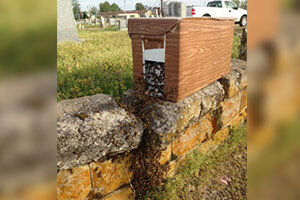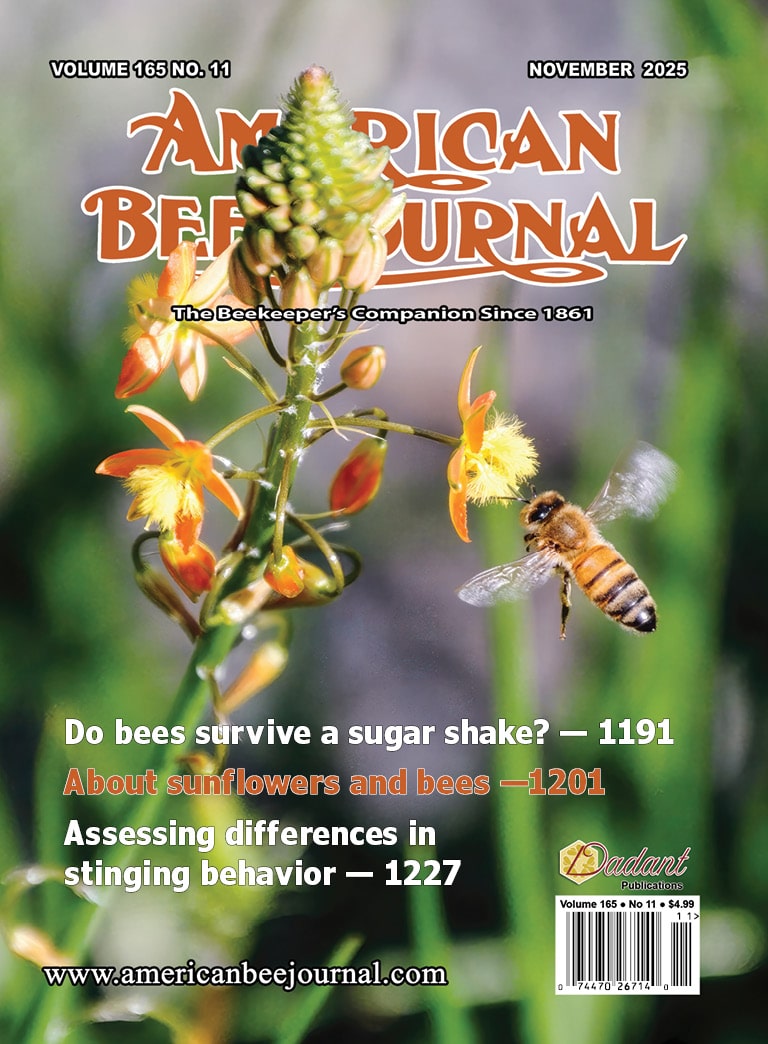
At this time, our bees are well into the honey flow. Between swarms and colony collapse there are some difficulties with many hives making honey surplus in my apiary as well. There are a few single colonies that are filling their third comb honey super. Unfortunately, the two-queen hive has swarmed from both sides. We have comb honey and I am hoping for two supers. If not, they will be converted to single colonies this fall. This year my strong colonies will donate a frame of capped brood for nucleus colonies going into fall. We need more bees going into winter so that perhaps we can have more bees coming out. Comb honey production requires strong colonies that are somewhat crowded. The downside is that crowded colonies are more susceptible to swarming.
Comb honey demand has increased. It is somewhat different than it was many years ago. Younger people are rediscovering comb honey. I’ve had some remark how good the taste of comb honey is and then inquire if I could somehow get it out of the wax first. There is a ‘disconnect’ when someone does not realize that honeycomb is made of beeswax. It gives the beekeeper a chance to educate them by explaining how bees make the edible wax as storage jars for their honey. Also, letting them know it is okay to crush the comb to get the honey out brings in additional information. They can learn how to let crushed comb drip overnight through a strainer to get all of the honey. The customers can also learn that honey can be extracted in a machine, but that is how they get honey in a jar. It is also good to tell them about uses for beeswax. Cabinet makers like beeswax for coating nails and screws. It makes an edible preservative covering for fresh fruit. It will help your fly line float when fishing at the river. There are so many uses for beeswax and it is always food grade if pure.
Many of you will have had the satisfaction of mentoring someone in the art and science of beekeeping. Once you become “hooked” into keeping our fascinating and favorite Hymenopterous insect, it is difficult not to share your passion. These days that is one of the most important things we do as beekeepers. We have mentioned before that the shortage of beekeepers is as important as the shortage of bees. Nationally we need more beekeepers. Kept bees are the major pollinators of almost all crops that require pollination. It takes a colony of bees at minimum to pollinate an acre of fruit or seed for next year’s vegetables and flowers. If you do not realize it every beekeeper, including you, performs a service to all within a 2-3 miles of your apiary. Anyone who grows a garden with flowers, fruit, vegetables or nuts is dependent on pollination. Most hobby beekeepers provide pollinating bees without compensation. Several enterprising beekeepers in suburbia offer to take care of bees placed in their neighbors’ gardens for a fee that includes some of the honey collected. It is a good deal for all concerned.
In the act of keeping bees, we as a group are altruistic. We provide pollination for a great variety of plants grown for production of food, feed and flowers. Some of the feed production helps wildlife secure more food. Your friends, neighbors and community should know your bees are providing them with pollination at no charge. If you wish to put a value upon pollination, Almond growers in California are paying $150 to $200 per strong colony for pollination services. If you are interested in looking into sharing in this extra income from your bees, there are …


